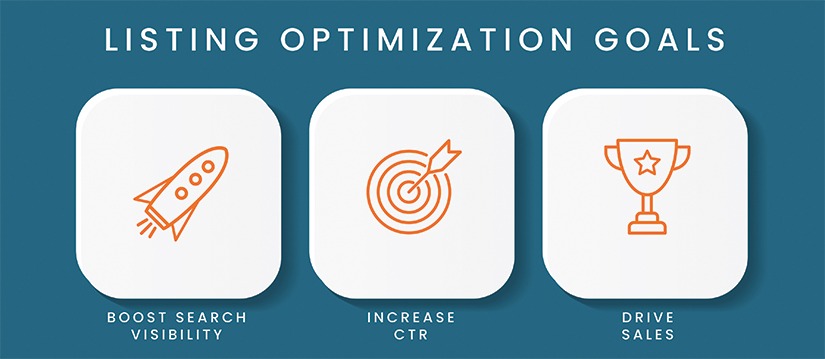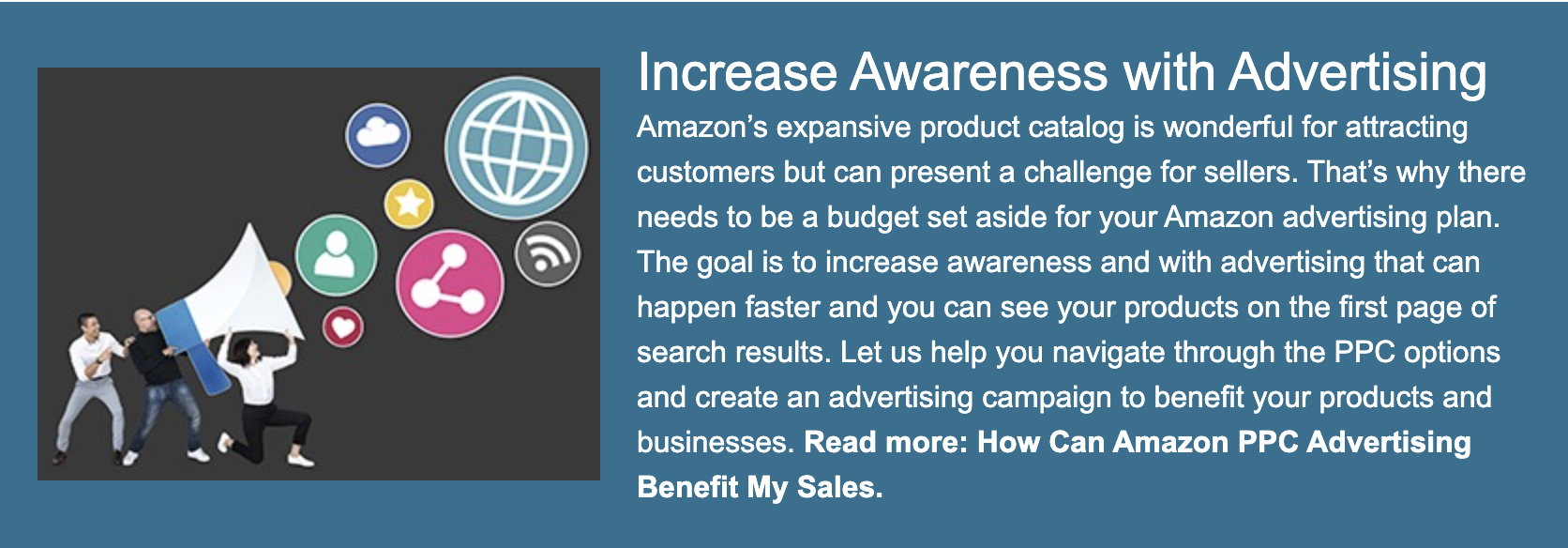June 16th, 2021
 Few things are more frustrating than browsing through Amazon and clicking on a product ad in hopes of purchasing the product you are on the hunt for, only to find out that it is out of stock. For brands that advertise on Amazon, this situation perfectly represents why the product and advertising optimization is combined into one holistic advertising option.
Few things are more frustrating than browsing through Amazon and clicking on a product ad in hopes of purchasing the product you are on the hunt for, only to find out that it is out of stock. For brands that advertise on Amazon, this situation perfectly represents why the product and advertising optimization is combined into one holistic advertising option.
If your Amazon product listing optimization and advertising optimization are dealt with in two separate silos that are out of touch with one another, it can contribute to the issue of ads running without the inventory to back them up. Using this holistic approach, you can learn to optimize your advertising campaigns using sales, traffic, conversion, and out of stock rates in order to boost and accelerate sales growth for your Amazon catalog. Here are a few quick tips on this approach that can help you stay ahead of the pack.

What is Amazon Optimization?
Optimizing Amazon product listing pages helps to improve organic rankings and sales, and involves a series of steps that address the title, bullet points, description, images, and backend keywords of your listing. To effectively optimize the product listing you will need to include keywords that are relevant to the product in question. Next, it’s important to write concise, yet strategic, copy for the title, bullet points and description. Finally, be sure to include professional product images, infographics, and other visual content.
The overall goal of Amazon product listing optimization is to increase visibility and search ranking within the Amazon algorithm. Keep in mind that the number of reviews also is a factor in your search ranking, so focusing on delivering impeccable customer service and fulfilling shipping promises are also vital to your success as a seller.
Amazon also puts a lot of focus to make sure the shopper experience is the best. They support this mission through reviews (and they have strict guidelines to make sure the reviews are authentic), as well as including a section for people to ask questions about your product. Both of these areas are highly important for your Amazon product optimization and are sometimes overlooked. Here is a quick breakdown of the goals of Amazon listing optimization:
- Boosting search relevancy or visibility
- Increasing click-through rate (CTR)
- Driving sales conversion rates (CR)

How Do I Optimize an Amazon Listing?
The first thing to do in the process of listing optimization is to identify the top ranking keywords for the product in question. This can be done by researching your competition on Amazon, searching Google and investing in software to help generate keywords. Research is essential to identify keywords that help to describe the product correctly.
Once you have a list of keywords you’ll want to incorporate them into your product listing title, bullet points and description. Start with the most relevant keyword and make sure to include that in your product title. Then use the next few keywords that are most relevant to your product in your bullet points and description.
 In addition to relevant keyword research, the visual impact of your listing is also extremely important. Shopping online has been a huge benefit for most people but there is one drawback - customers can’t actually hold and review your item in their hands. That’s why it’s necessary to have professional photography, informative infographics, and dynamic videos that help to highlight your product and make it stand out from the competition.
In addition to relevant keyword research, the visual impact of your listing is also extremely important. Shopping online has been a huge benefit for most people but there is one drawback - customers can’t actually hold and review your item in their hands. That’s why it’s necessary to have professional photography, informative infographics, and dynamic videos that help to highlight your product and make it stand out from the competition.
By incorporating high ranking keywords into your listing text, you set your listing up for success by driving traffic to those keywords via your targeted ad campaigns. Any high ranking keywords that are unused during the listing optimization process should go into your PPC bank to use on the back end of the listing, we will cover this in the next section.
How Do I Optimize my Amazon Ads?
There are two key components to Amazon advertising that benefit the advertiser.
- Targeted Ads: These ads are highly effective because they are personalized based on the purchasing and browsing activity of the shopper.
- Pay Per Click Ads: PPC ads are budget-friendly and work for all size businesses. Whether you have $100 or $1,000 to spend on advertising, you can get exposure.
Pay Per Click Amazon Advertising Optimization Methods
Today, Amazon consultants can help with your Amazon Advertising Optimization by identifying the best PPC ad formats for your business and budget.

- Sponsored product ads enable you to showcase specific products to customers that are looking for that type of product. These are displayed within the product listings.
- Sponsored brand ads are advertisements on up to three of your products that can help showcase your brand, creating more awareness.
- Sponsored display ads are the third type of ads, and these target consumers who are thinking about adding a product to their cart.
New advertising options are emerging due to the popularity of pay per click advertisements and their ability to adjust to today’s consumers. One of the new types is called Posts, and an Amazon consultant is the perfect person to help introduce you to this new advertising method and to evaluate if this method or one of the other three listed above are best for your business.
What is Amazon's Advertising Objective?
Amazon’s strategy when it comes to ads is to make sure that the ads shown on their site are relevant for the consumer. Generally, this is why the only ads shown contain relevant keywords that are also incorporated into the product listing text itself (title, bullet points, description, search terms, etc.).

We recommend checking to see if there are keywords that don’t have any impressions contained in your product listing text. Make sure to add keywords that are generating impressions directly into the listing text to make sure that ads will be able to be run for them – this will help potentially reach a broader customer base.
Are Amazon Ads Worth the Investment?
 Getting a handle of your ad spend is key to ensuring that Amazon ads work for you, and not against you. In many cases, multiple products that are contained within one ad group typically share the same keywords. Over time, it will become clear which products are the best-sellers within a particular ad group.
Getting a handle of your ad spend is key to ensuring that Amazon ads work for you, and not against you. In many cases, multiple products that are contained within one ad group typically share the same keywords. Over time, it will become clear which products are the best-sellers within a particular ad group.
To target the maximum amount of sales within that ad group, any product that is performing poorly and failing to generate clicks or convert into sales should be removed from the ad group after a certain amount of time. With this strategy, you will be able to have better control over where you are sending impressions and clicks, and you can focus your advertising budget to those products that effectively convert clicks into purchases.
Develop a Cross-Functional Approach
Unlike traditional retail establishments, at Amazon the algorithm runs the show. Algorithms don’t care about your job title or what company you work for. If you want to succeed with Amazon, your strategy for ads and optimization has to be organized and intentional. Developing a cross-functional approach that includes sales, marketing, and supply chain strategy will be the key to growing a successful brand on the platform.

Even if you are doing everything right from an advertising perspective, if the demand for your product fails to keep up with Amazon’s fulfillment expectations, this can lead to missed sales opportunities and a drop in ranking, and as a result, it can take months to get your listing back on track. Whereas the worst outcome for traditional marketing channels outcome is wasted budget, making the same mistakes on the Amazon platform can make a lasting impact on your business if you don’t consider a cross-functional strategy.
Remember that all pieces work together, and therefore should not be treated as individual silos but integral parts of the larger Amazon ecosystem. Your company or brand goals and objectives should align with budgets to work within Amazon’s model to maintain the highest level of customer experience.
Are you ready to pool your efforts and make the most out of your Amazon product listing optimization and Amazon advertising optimization? Let’s take a look at your account and create a plan for page 1 search results and success. Let’s chat.
